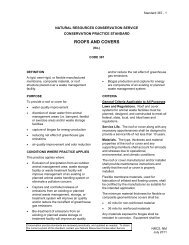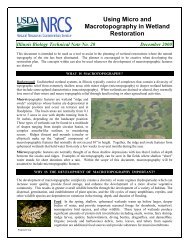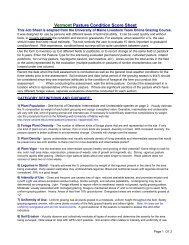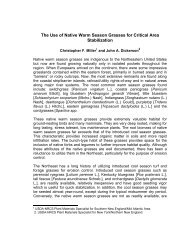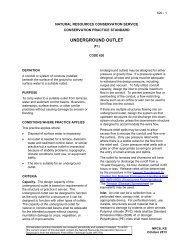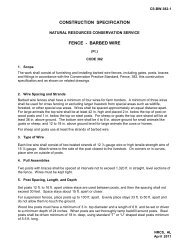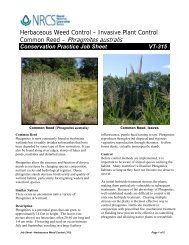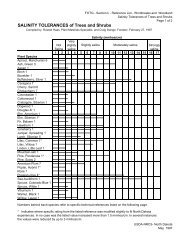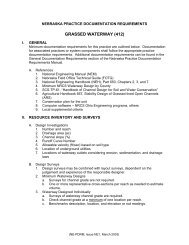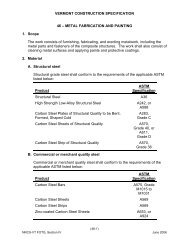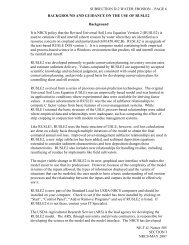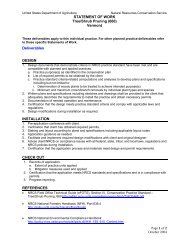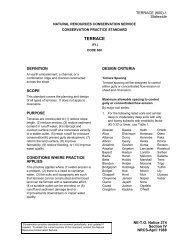technical notes - Field Office Technical Guide - US Department of ...
technical notes - Field Office Technical Guide - US Department of ...
technical notes - Field Office Technical Guide - US Department of ...
You also want an ePaper? Increase the reach of your titles
YUMPU automatically turns print PDFs into web optimized ePapers that Google loves.
7<br />
year to plant the unit to one crop or have multiple crops within the strips in the first<br />
year or two.<br />
EXAMPLE:<br />
Color coding step maps by years on complicated plans for new cooperators can help<br />
both the farmer and the Planner determine that “what is planned will work in the<br />
field.” As an example; color corn green, oats yellow, and meadow light brown. Use a<br />
color coded legend on the step maps.<br />
Even the veteran stripcropping farmer will benefit when you sit down with them in the<br />
field after layout. Draw up a rough layout <strong>of</strong> the strips in the field and discuss how to<br />
crop them this year and in future years. Give the farmer these rough <strong>notes</strong>.<br />
SUMMARY:<br />
As noted, there are many possibilities for rotation, many things that complicate ease<br />
<strong>of</strong> moving into the rotation, etc. that can confuse the person applying their first strips.<br />
Also, crop failure because <strong>of</strong> weather, seed, etc.; or a change in livestock programs<br />
etc. can mean revisions in the system. To minimize confusion, conservation planning<br />
is essential for contour stripcropping.<br />
CONTOUR STRIPCROP LAYOUT PROCEDURES:<br />
Contour strips should be laid out to effectively control erosion and at the same time<br />
permit farming with a minimum <strong>of</strong> inconvenience. The most convenient strips are<br />
even in width throughout their entire length. To secure maximum uniformity on<br />
irregular slopes, a cable (cam-line) is used and deviations from the true contour are<br />
made. Deviations should be within allowable limits as stipulated in the <strong>Technical</strong><br />
<strong>Guide</strong>. After the key lines are located, a cable is used for horizontal control, and a<br />
hand level for vertical control. Parallel strips are laid out to measured widths to<br />
accommodate row widths and row numbers to the equipment used to farm the strip.<br />
NRCS, Iowa<br />
November 2007



